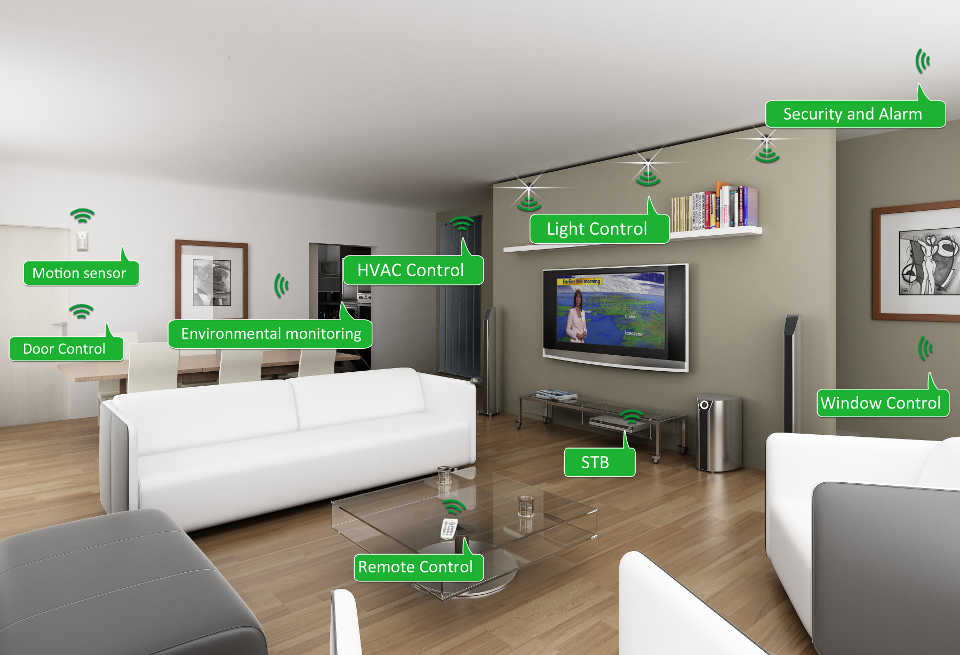In today’s rapidly evolving world of home automation, choosing the right communication protocol has become a crucial decision for homeowners and tech enthusiasts alike. With various options available, understanding the differences between Zigbee, Z-Wave, and WiFi is essential for creating a seamless and efficient smart home experience. In this article, we explore these three protocols, their unique features, and how they can best serve your smart home needs.

Understanding Zigbee
Zigbee is a wireless communication protocol designed for low-power, low-data rate applications. It operates on the IEEE 802.15.4 standard and is commonly found in smart home devices such as lights, sensors, and locks. The protocol is known for its ability to create a mesh network, where each device can act as a repeater, extending the range of the network.
Advantages of Zigbee
- Mesh Networking: Allows devices to communicate with each other, enhancing network reliability.
- Low Power Consumption: Ideal for battery-operated devices.
- Interoperability: Compatible with a wide range of devices and brands.
Disadvantages of Zigbee
- Interference: Operates on the crowded 2.4 GHz band, which can lead to interference.
- Limited Range: Typically shorter range compared to other protocols.
Exploring Z-Wave
Z-Wave is another popular wireless protocol used in smart home systems. It operates on the 908.42 MHz frequency in the United States, which helps reduce interference with other devices. Like Zigbee, Z-Wave creates a mesh network, but with some key differences.
Advantages of Z-Wave
- Less Interference: Operates on a unique frequency, minimizing overlap with other devices.
- Reliable Mesh Network: Supports up to 232 devices, providing robust network coverage.
- Backward Compatibility: Works with older Z-Wave devices, ensuring long-term usability.
Disadvantages of Z-Wave
- Higher Cost: Devices can be more expensive than those using other protocols.
- Limited Manufacturer Support: Fewer brands offer Z-Wave products.
Delving into WiFi
WiFi is the most well-known wireless protocol, widely used for internet connectivity in homes and businesses. It operates on the 2.4 GHz and 5 GHz frequency bands and is known for its high data transfer rates and extensive range.
Advantages of WiFi
- High Data Rates: Supports streaming and data-heavy applications.
- Wide Coverage: Extensive range suitable for large homes.
- Universal Compatibility: Works with most modern devices.
Disadvantages of WiFi
- Higher Power Consumption: Not ideal for battery-operated devices.
- Network Congestion: Can suffer from interference and slower speeds with many connected devices.
Zigbee vs Z-Wave vs WiFi: A Comparative Analysis
When deciding between Zigbee, Z-Wave, and WiFi, consider the specific needs of your smart home. Each protocol has its strengths and weaknesses, making them suitable for different applications.
Network Reliability
Both Zigbee and Z-Wave offer reliable mesh networking capabilities. However, Z-Wave tends to experience less interference due to its unique frequency band, making it a preferable choice for larger installations.
Power Efficiency
If power efficiency is a priority, Zigbee is the better choice. Its low power consumption makes it ideal for battery-operated devices such as sensors and remote controls.
Data Transfer Needs
For applications requiring high data transfer rates, WiFi is the superior choice. Its ability to handle large volumes of data is unmatched, making it perfect for streaming and other data-intensive tasks.
Integrating Smart Home Devices with Zigbee, Z-Wave, and WiFi
Integrating smart home devices with different protocols can enhance your home’s functionality. Many devices are compatible with multiple protocols, allowing for flexible and customized setups. For detailed guidance on setting up your smart home, consider reading more on Home Automation with Raspberry Pi and Smart Home Automation Using Alexa.
Conclusion: Choosing the Right Protocol
In conclusion, the choice between Zigbee, Z-Wave, and WiFi ultimately depends on your specific needs and preferences. Whether you prioritize power efficiency, network reliability, or data transfer rates, each protocol offers unique benefits. To further explore your options, visit Smart Home Automation Ideas for more insights.

FAQs
What is the main difference between Zigbee and Z-Wave?
The main difference between Zigbee and Z-Wave lies in their operating frequencies and network capabilities. Zigbee operates on the 2.4 GHz band, while Z-Wave uses the 908.42 MHz frequency. Additionally, Zigbee supports a larger number of devices in its network, whereas Z-Wave offers less interference.
Can WiFi be used for all smart home devices?
While WiFi can be used for many smart home devices, it may not be ideal for all applications due to its higher power consumption. Devices like sensors and remote controls benefit more from low-power protocols like Zigbee or Z-Wave.
How do I choose the best protocol for my smart home?
To choose the best protocol for your smart home, consider factors such as power efficiency, network reliability, and data transfer needs. Evaluate the specific requirements of your devices and home setup to make an informed decision.





